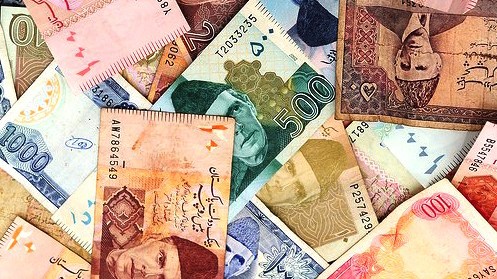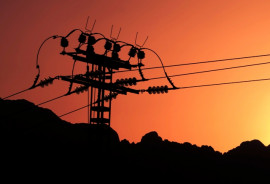
As the bells for another new year are tolling, the country’s crippled economy will be hobbling into 2023 with a humiliating record of the downward spiral of rupees vis-à-vis the US dollar.
With the government struggling with high import payments, depleting foreign exchange reserves and political uncertainty, the overall value of the Pakistani rupee depreciated by Rs48.38 against the greenback in 2022.
The currency suffered repeated historic lows despite the government trying to keep a steady hand on the wheel of the economy and even went so far as to replace its economic czar — changing its horses in the midstream to arrest the looming crisis of default.
Moreover, at one point, the currency of war-ravaged Afghanistan appeared to be doing reasonably well given the strong headwinds that buffeted its economy. Meanwhile, the Pakistani rupee ranked among the worst-performing currencies in the global market.
Here’s a quick look:
On December 1, the Pakistani rupee, after seeing a day’s nominal improvement, reverted to its failing destiny against the US dollar during early trading in the interbank market.
After being stable for a week with a marginal recovery, the spot rate of the rupee settled at a low of Rs224, losing 31 paisas.
In sharp contrast, at the outset of the year, in January, the value of the rupee against the US dollar was Rs176.75 in the interbank market.
The rupee witnessed lacklustre trading during the session, showing an intraday high bid of 176.75 and a low offer of 176.65. Within the open market, the rupee was being traded at 177.50/178.50 per dollar.
In February, the value of the dollar stood at Rs176.42 and on March 1, it jumped to Rs177.41.
In April, the rupee further lost its value as the dollar gained ground standing at Rs184.9.
The perpetual decline continued into May when the Pakistani rupee further plummeted, settling at Rs186.62.
In June, the dollar surged by Rs11 to settle at Rs196.86 — setting new records with each high.
In July, the rupee tumbled to an all-time low in the open market, trading as high as 250 against the dollar, according to data shared by the Forex Association of Pakistan (FAP).
However, the local currency made small gains in the interbank after nearly two weeks of consistent decline in consecutive sessions.
According to the State Bank of Pakistan, the rupee closed at 239.37 in the interbank, up Rs0.57, or 0.24 per cent.
A key measure of US dollar strength is the US dollar index against a basket of global currencies. Over the last several months, the index has risen 18% while the rupee has lost 37% against the US dollar, a 21% higher depreciation.
On August 1, the rupee had lost 42% in one year while US dollar index was up 14%, a 28% differential.
'Daronomics'
The crises came to a head in September when the government decided to replace its financial czar Miftah Ismail with Ishaq Dar who returned to the country after five years of self-imposed exile in London to play what many experts describe as ‘Daronomics’.
The rupee immediately made massive gains, skyrocketing by 1.11% against the US dollar in the interbank market, hours before the arrival of the PML-N leader in the country who was slated to become Pakistan's new finance minister.
The rupee continued its winning streak against the greenback In October and gained Rs1.65 against the US dollar in interbank trading to close at Rs225.63.
The rupee maintained its ground for the eighth consecutive session against the dollar since Ishaq Dar took charge of the finance ministry.
In November, the value of the dollar again decreased slightly and settled at Rs220.64.
However, the trend proved to be temporary.
With a widening gap between demand and supply of the US dollar, the value of Pakistani currency this month (December) depreciated beyond 225 against the greenback in the inter-bank market after a gap of two and a half months.
The downtrend encouraged people to park their savings in gold in a bid to cushion the impact of rupee depreciation at a time when inflation was running high.
























COMMENTS
Comments are moderated and generally will be posted if they are on-topic and not abusive.
For more information, please see our Comments FAQ